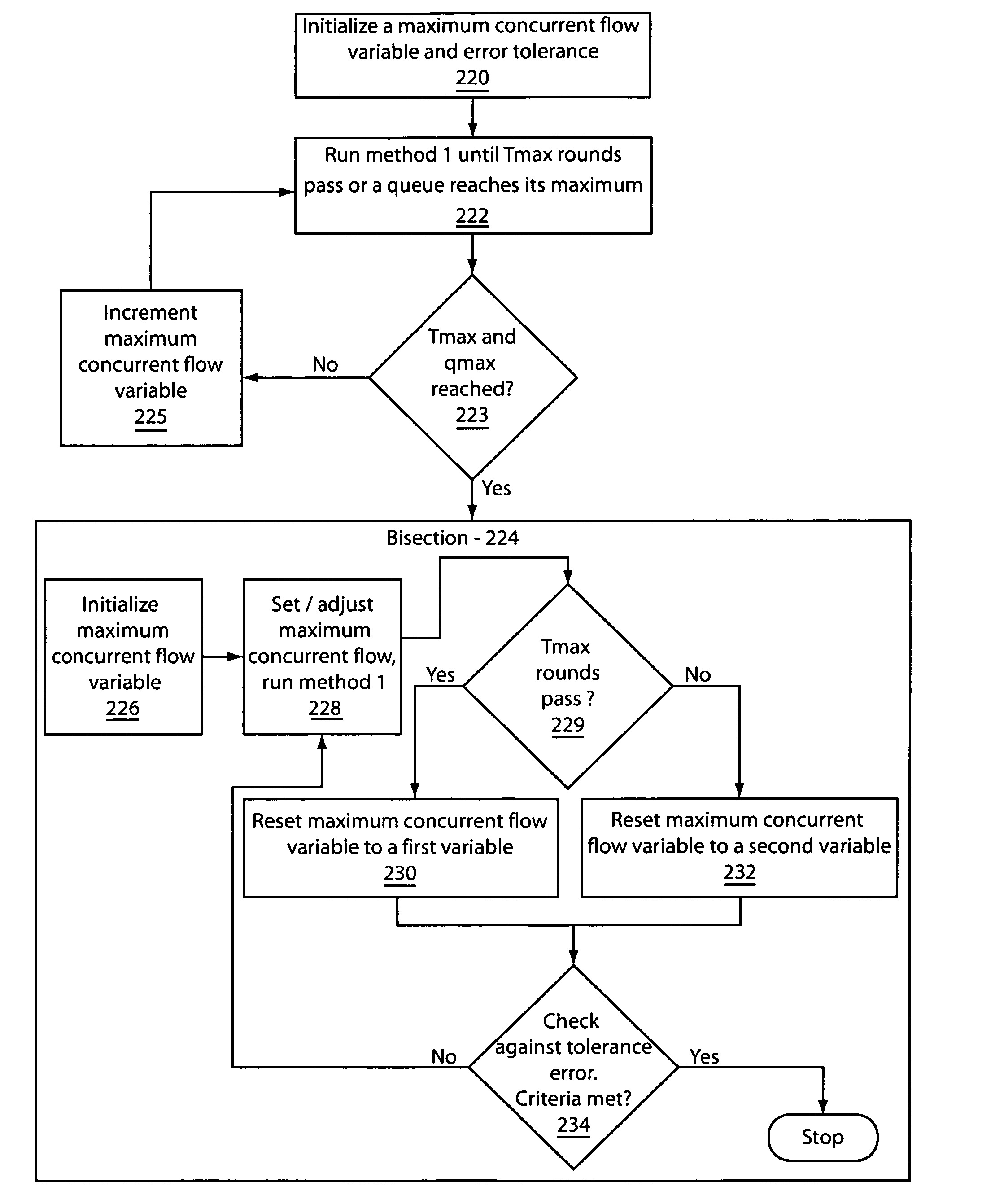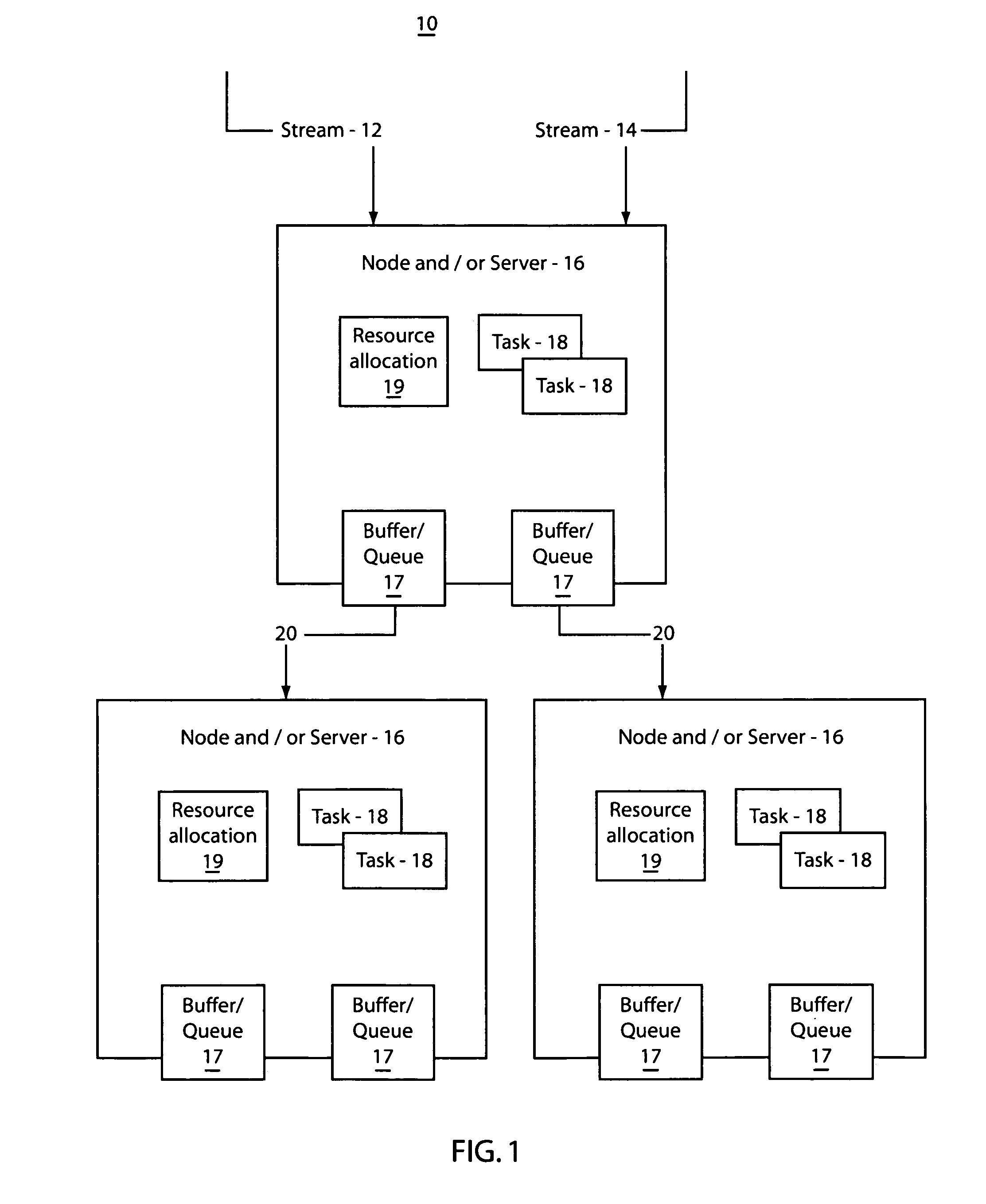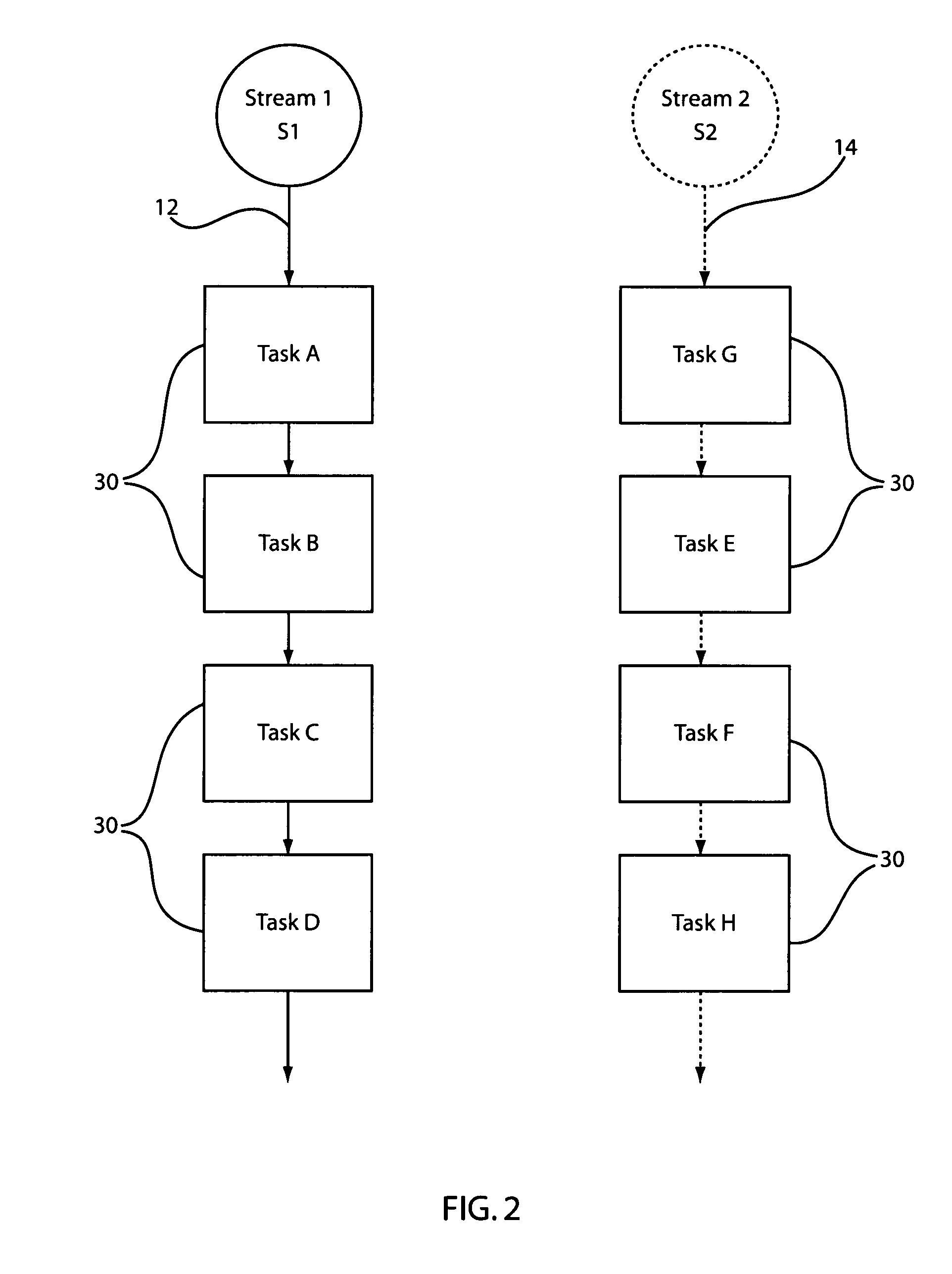Distributed resource allocation in stream processing systems
a resource allocation and stream processing technology, applied in data switching networks, frequency-division multiplexes, instruments, etc., can solve the problems of dynamic load distribution, resource allocation has not yet been fully studied, and it is difficult to determine the best resource allocation policy. to achieve the effect of maximizing the concurrent flow ra
- Summary
- Abstract
- Description
- Claims
- Application Information
AI Technical Summary
Benefits of technology
Problems solved by technology
Method used
Image
Examples
Embodiment Construction
[0029]Embodiments in accordance with present principles consider a distributed stream processing system which includes a network of cooperating servers, collectively providing processing services for multiple concurrent stream-based applications. Each application needs sophisticated processing of data streams from dispersed sources in a near real-time manner. The performance of such stream processing systems depends on an effective distribution of the available processing resources to the variety of data streams over the multiple, cooperating servers. Assuming all servers have finite computing resources and all communication links have finite available bandwidth, a generalized multi-commodity flow model is presented for the above-described allocation problem. Distributed methods are provided for finding the best resource allocation schemes in such stream processing networks.
[0030]Detailed performance analysis on the optimality and complexity of these methods are also provided. Numer...
PUM
 Login to View More
Login to View More Abstract
Description
Claims
Application Information
 Login to View More
Login to View More - R&D
- Intellectual Property
- Life Sciences
- Materials
- Tech Scout
- Unparalleled Data Quality
- Higher Quality Content
- 60% Fewer Hallucinations
Browse by: Latest US Patents, China's latest patents, Technical Efficacy Thesaurus, Application Domain, Technology Topic, Popular Technical Reports.
© 2025 PatSnap. All rights reserved.Legal|Privacy policy|Modern Slavery Act Transparency Statement|Sitemap|About US| Contact US: help@patsnap.com



